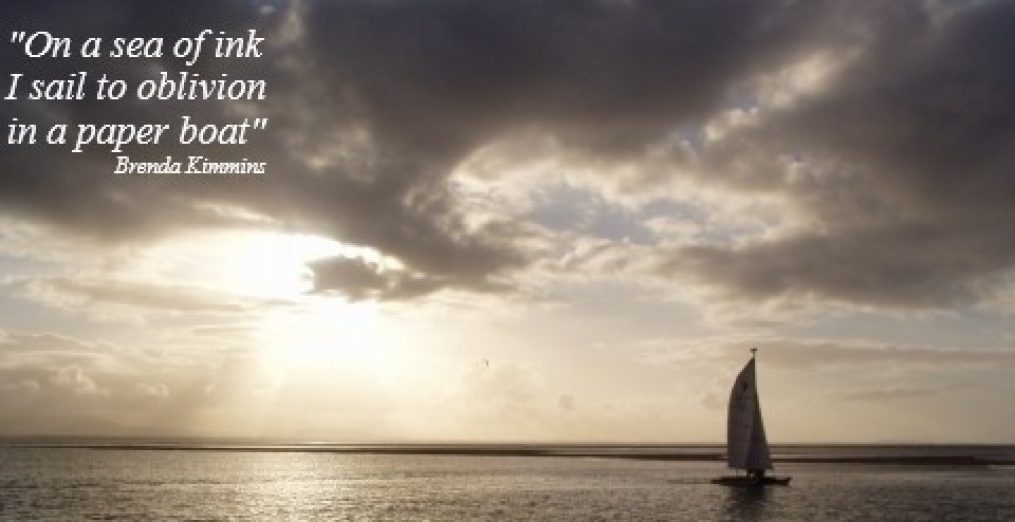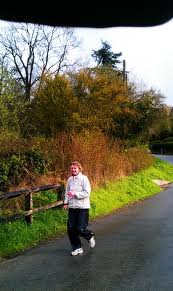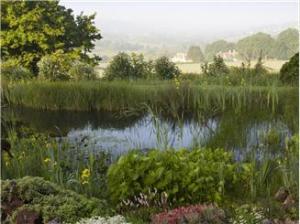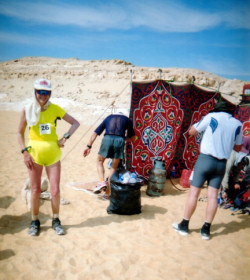‘Sahara Marathon ~ ultra long distance race in the desert’.
We had a great speaker at WI who fits in beautifully with our Haiku Heights prompt word for this week, Desert.
Tortuous terrain,
Melancholy Marathon,
Desert of Despair
Celia Hargrave, talked about her experience of running in The Marathon Des Sables. No British woman had ever taken part in the race and it was advertised as “The Toughest Footrace on Earth”. Both of these factors were a challenge to Celia so she decided to sign up!
Celia is quite an amazing woman. She is over 60, a former head teacher of a large Birmingham school, and a member of Sheepscombe WI. Like many WI members, Celia contributes hugely to her community. She is a magistrate, a fundraising co-ordinator for Sheepscombe Village Hall, and she and her husband open their garden for the National Garden Scheme. Her garden is about 3 acres set in small woodland with panoramic views. She has a variety of herbaceous and mixed borders, a rose garden, extensive vegetable plots, and wild flower areas, plantings of spring bulbs with thousands of snowdrops and hellebores, a woodland walk, 2 small ponds, a waterfall and a larger conservation pond. There are also wooden sculptures in the garden, which is all grown on organic principles.
And, as if that were not enough, Celia co-ordinates a club for the elderly and housebound in her area!
Celia had run before competitively in the Stone Masters Marathon, The Chelmsley Wood 24 hour track Race, the London Marathon in 2 hours 46 minutes, London to Brighton Race and Lands End to John O’Groats so she was no novice! Her longest distance was over 120 miles for which she was ranked sixth in the world. However the Sahara Marathon or MDS is a 6 day 243 km or 151 mile endurance race in which all competitors have to carry everything they need for their survival. So this was to be an enormous challenge.
Celia sought medical advice and drew up a training programme which involved running every day. She did some 50 mile races for charity and started to raise money for her challenge. Fortunately Celia’s own WI at Sheepscombe organised her fundraising and got TV, radio and press coverage for her. In order to adapt to running in extreme dry heat conditions, Celia started running in her local sauna! This caused some consternation among other spa users but helped Celia get used to taking in fluids while running.
Eventually Celia took off for Casablanca in Morocco and travelled to Ouarzazate to meet the other competitors. The majority seemed to be French that year but there were 20+ from the UK. Other competitors came from all over the world. They spent one wonderful night in a 5 star luxury Moorish hotel before setting off on a coach out into the desert. After several hours they had to get off the coach and walk the rest of the way to their campsite. Two things that impressed Celia there were the desert orchids and a woman in red high heeled shoes both of which seemed incongruous!
The campsite seemed to be in two halves: one for the competitors, which was very basic; and one for the non-competitors, which was comparatively luxurious. Celia was sharing a ‘tent’ with 12 to 14 men and women competitors and they had very little space. In the tent they had to store everything they had brought and carry it on their backs in a rucksack daily. The rucksack was to be no more than 7 kilos in weight when filled. Celia had reduced her packing to a minimum but still had to carry her map, day book, compass, medical kit, sleeping bag and food. Each competitor was allowed 9 litres of water a day which was rationed and given out at each checkpoint along the way. The 9 litres was for everything ~ drinking, washing clothes and self!
When at last the first day of the race proper arrived, the tent was removed at 6.30am ready to be transported to the next stopping point 15 miles away. As the temperature can quickly reach 120°F Celia was hoping for an early start, and was not happy to be kept hanging around for hours in the heat.
The Marathon Des Sables is run in sections over 6 days, or 7 for some slower runners. This is the equivalent of 5½marathons. That is a speed of between 3 and 14km an hour. Competitiors can be aged between 16 and 78 years old.
Day 1 ~ 25 km, Day 2 ~ 34km, Day 3 ~ 38km, Day 4 ~ 82km, Day 5 ~ 42km, Day 6 ~ 22km
Celia described the terrain on the first day as ‘dunettes’ and the second day as much higher dunes. Over the course of the race she would run on sand, rock, dried river beds, oases and dunes. She remembered the wind as well as the heat; but her abiding memory was of the horizon which never seemed to get any closer, and the breathtaking vision of a huge sky where every star was visible because of the total darkness.
By the third day Celia had developed a blister which was treated with iodine in the medical tent. This was so painful that she determined not to go back there again. The heat and rubbing really takes its toll on the feet. Some competitors lost nails or got infections in blisters which can put them out of the race.
Day 4 was a rest day. Then day 5 was the toughest day. It took Celia 13 hours of non stop running/walking to cover the 50 miles of barren wilderness. Some competitors had to run right through the night, some taking 32 hours altogether to cover the 50 miles. Celia had the deepest admiration for these slower runners for their self discipline, determination and sheer perseverance. Those who know reckon that, while physical fitness is really important, mental stamina constitutes at least 50% of whether competitors finish the race or not.
By this time Celia was on a high and pleased to be coping so well. She was way ahead of some competitors, male and female. But on day 6 all that changed. Instead of relying on her compass, Celia took a route that others seemed to be following. This led her to high rocky ground and a precipice which she fell over. Amazingly her rucksack got wedged in the rocks. Celia became disorientated, being in pain and in shock. She began hallucinating. However she managed to release her bag and carried on a further 11 miles to the end of the stage. All the time she was worried and anxious in case she could not finish. But at last she arrived on the tarmac road which marked the last kilometre leading to the finish at the small town of Tazzarine. Here Celia kissed everybody she met with sheer relief. She was then taken by jeep to a mud house with a fireplace in the wall and a wellspring of hot water. This she played in, delighting in being clean for the first time in a week. She then had some food and was taken by coach back to a hotel for a celebratory Gala Dinner. It turned out that Celia was 1st among the UK entrants, beating all the men as well as the women.
It was later discovered that the fork in Celia’s rucksack had stuck in her back during her fall over the precipice causing the injury which was causing her so much pain.
Celia has done two other desert events since then, one being the Trans 333, a 208 mile race which she did in 86 hours with only two lots of two hours sleep.86 hours!
She truly is inspirational.



